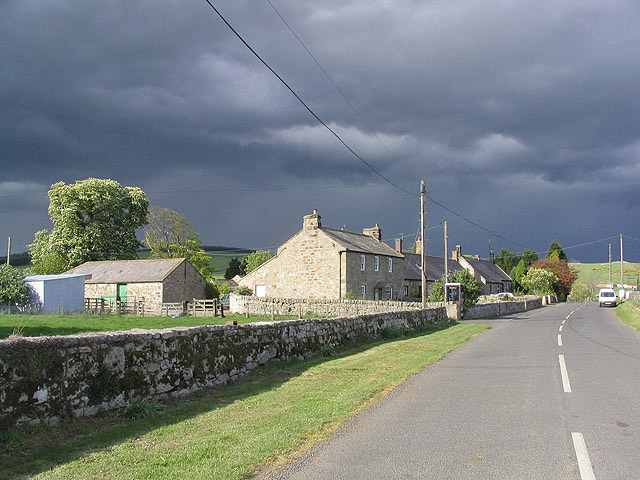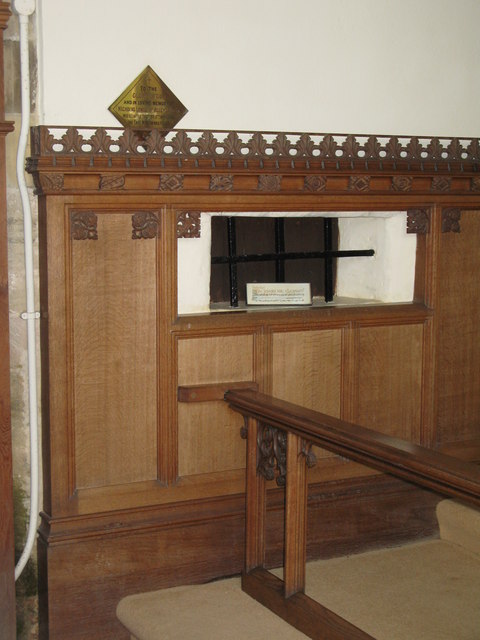Topics > Northumberland > Bolton > Bolton Leper Hospital
Bolton Leper Hospital
A leper hopital was established in Bolton, Northumberland, in the 13th century. The site covers a large area to the north of the modern village. There are few visible remains, but the site is of archeological and historical importance - it is a Scheduled Monument.
An hospital for a master, three chaplains, thirteen lepers, and other lay brethren, was founded and endowed prior to 1225, by Robert de Roos, Baron of Wark, in honour of St. Thomas the Martyr, or the Holy Trinity, and made subordinate to the abbey of Rivaulx, and the priory of Kirkham, in Yorkshire.
Extract from: A Topographical Dictionary of England comprising the several counties, cities, boroughs, corporate and market towns, parishes, and townships..... 7th Edition, by Samuel Lewis, London, 1848.
Despite the fact that the leper hospital at Bolton has been partially levelled and obscured by medieval cultivation, substantial and significant archaeological deposits survive. This monument is of particular importance as it is well documented and is a rare survival of a medieval hospital in Northumberland.....The main area of above-ground remains lies in the north west corner of the monument where the lower courses of masonry walls are visible. They appear as grassy mounds on average 2m high which conceal the sites of hospital buildings...
The hospital at Bolton was founded as a religious institution in AD 1225 for a master, three chaplains and 13 leper brethren, and for the relief of the poor and strangers. It was dedicated to St Thomas the Martyr and was under the supervision of the Yorkshire monasteries of Kirkham and Rievaulx.The brethren were under a religious rule. Licence to build a chapel was granted during the Priorate of Ralph Kerneth (1216-1233). In 1335/6 licence to crenellate (fortify) the "dwelling place of Boulton Hospital" was granted. Lepers do not appear to be mentioned after c.1338 and then it seems to have become more like a monastery. The hospital was dissolved c.1547. In 1575 the site of the hospital with a garden, about 6 acres of meadow and a croft were granted to John Sonkye and Percival Gunson....
Bolton leper hospital. Historic England - Scheduling. https://historicengland.org.uk/listing/the-list/list-entry/1008838
It has been said that leper-hospitals were "heavily staffed with ecclesiastics." There were indeed three at Lincoln, Ilford and Bolton to minister to ten or twelve men, but they conducted the temporal as well as spiritual affairs of the society. At Bolton, for example, the priests had to administer the manor which was held by the hospital. It was more usual to have only one chaplain in a household of thirteen. This was a favourite number, the figure being regarded with reverence as suggestive of the sacred band of Christ and His Apostles: "for thirteen is a convent as I guess," writes Chaucer. There were to be at Sherburn "five convents of lepers, that is of the number of sixty-five at the least"; five priests ministered to them, of whom one acted as confessor, and used also to visit the bedridden and read the Gospel of the day to them.
It is a far cry from Kent to Northumberland, but there existed at Bolton a hospital of St. Thomas. Within a few miles had been fought the Battle of Alnwick, a victory won, it was believed, as the result of the king’s public penance the same day (1174). The date of foundation is not recorded, but it was begun before 1225.
Project Gutenberg's The Mediæval Hospitals of England, by Rotha Mary Clay, 1909
https://www.gutenberg.org/files/50501/50501-h/50501-h.htm











